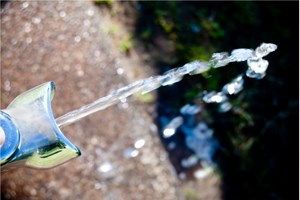EPA removes Smithtown Groundwater Contamination Site from National Priorities List
(UI) – The U.S. Environmental Protection Agency has deleted the Smithtown Groundwater Contamination Superfund site in Smithtown, New York, from the National Priorities List (NPL) of Superfund sites. EPA has determined all cleanup work has been completed and that no further federal action is required at the site.

Groundwater at the site became contaminated with tetrachloroethylene (or PCE), a solvent used in dry cleaning and metal cleaning, though in this case, EPA was not able to pinpoint specific sources of the contamination. Exposure to PCE can have serious health impacts, including liver damage and increased risk of cancer. EPA selected a cleanup plan in 2004 to clean up groundwater contaminated with PCE. The plan included providing alternate water supplies to homes affected by the contamination and relied on existing state and local regulations to restrict future groundwater use.
In 2005, EPA began installing service lines to connect people’s homes to the public water that is regulated and regularly tested. In addition, EPA extended the water main so all the impacted homes could be connected. EPA monitored groundwater using a network of monitoring wells to gauge the concentration and movement of the PCE in the groundwater over time.
When hazardous substances, pollutants or contaminants remain on a site at levels that limit use and restrict exposure, EPA conducts follow-up reviews every five years. These five-year reviews ensure that the cleanup actions continue to protect people and the environment. Several five-year reviews for the site were performed from 2011 through 2020 to ensure that contamination was not posing a risk to people. The most recent five-year review, conducted in November 2020, determined that EPA’s actions at the site protect people’s health and the environment. Levels of PCE in the groundwater have fallen to below state and federal drinking water standards. As a result, no additional five-year reviews will be required.
“A few decades ago, people were drinking the contaminated groundwater at this site, but thanks to our Superfund program, EPA was able to quickly give them a safe and permanent source of drinking water, allowing the aquifer time to recover.” said EPA Regional Administrator Lisa F. Garcia. “Contamination levels in the groundwater have fallen to a level that meets drinking water standards, and EPA is now removing the designation of this site as a Superfund site.”
The NPL includes some of the nation’s most serious uncontrolled or abandoned releases of contamination. EPA deletes sites or parts of sites from the NPL when no further cleanup is required to protect human health or the environment. Years, and sometimes decades, of complex investigation and cleanup work have gone into getting these sites to where they are today.
Related News
From Archive

- Glenfarne Alaska LNG targets late-2026 construction start for 807-mile pipeline project
- U.S. water reuse boom to fuel $47 billion in infrastructure spending through 2035
- $2.3 billion approved to construct 236-mile Texas-to-Gulf gas pipeline
- Major water pipe break in Puerto Rico hits over 165,000 customers
- Potomac River Tunnel project enters construction phase beneath Washington, D.C.
- Pennsylvania American Water launches interactive map to identify, replace lead water service lines
- Trump's tariffs drive $33 million cost increase for Cincinnati sewer project
- Utah city launches historic $70 million tunnel project using box jacking under active rail line
- Tulsa residents warned after sewer lines damaged by boring work
- Fatal trench collapse halts sewer construction in Massachusetts; two workers hospitalized



Comments